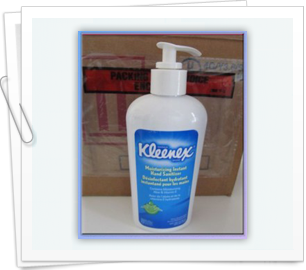Online CPR Certification Blog
Curbing germ transmission in schools through proper hygiene
Date: October 23rd, 2012
 One of the things most parents are worried about is usually their child coming home from school with a health problem or two. Unfortunately this fear is not without basis. In school children tend to interact with other students who have in turn interacted with other people both in and out of school. In the world of germs, this offers quite a number of possibilities, and it is a wonder that transmission rates are not higher than they are. There is hope however as was discovered by Kimberly – Clark Professional on a recent study.
One of the things most parents are worried about is usually their child coming home from school with a health problem or two. Unfortunately this fear is not without basis. In school children tend to interact with other students who have in turn interacted with other people both in and out of school. In the world of germs, this offers quite a number of possibilities, and it is a wonder that transmission rates are not higher than they are. There is hope however as was discovered by Kimberly – Clark Professional on a recent study.
Cleanliness is the Key
Kimberly-Clark Professional specializes in sanitation products, and they produce paper products and also cleaning solutions. They tested the level of contamination on objects that are frequently touched in six elementary schools. The professionals used adenosine triphosphate tests to find out the level of baseline contamination. After these tests, the schools that were participating were asked to implement an educational program that was customized for the fifth grade down through kindergarten and the students were taught how to wash wipe and sanitize.
Part of the program was implemented using stocks of hygiene products that were specifically targeted towards kids like surface wipes that were free of both bleach and alcohol, anti-viral facial tissue and hand sanitizers. All these products were placed in classroom stations that were put in each class. The results of the test were quite surprising. Armed with both the knowledge and the tools that were needed to stop the transmission of germs from one person to another, the students demonstrated just how strong the impacts of the health measures were. The level of contamination fell drastically from 838 to 243. This is less than one third of the original level of contamination.
High risk of illness
From the original test, it was found that the contamination level was at 838. According to Kimberly-Clark Professional, when the ATP reading reaches 300 or exceeds this number then there is a high risk for the transmission of illness. When this is compared to the original reading of 838 that was recorded then it means the risk of transmission before the safety measures were not only high but extremely high. This just goes to show how much danger kids are exposed to every single day that they set foot in schools. There is some hope, however.
The above study by Kimberly-Clark Professional revealed that after seven months of the hygiene measures the contamination levels dropped by very large percentages; 76% on the door locks of bathroom stalls, 71% on desks, and 53% on the door handles and several other areas also recorded various improvements. Out of all these results, the improvement on the desks was the most significant especially since the desks were things that the kids interacted with the most. The students were responsible for wiping down their own desks each day and this just demonstrated that with the right tools and the right knowledge there is little that cannot be achieved.